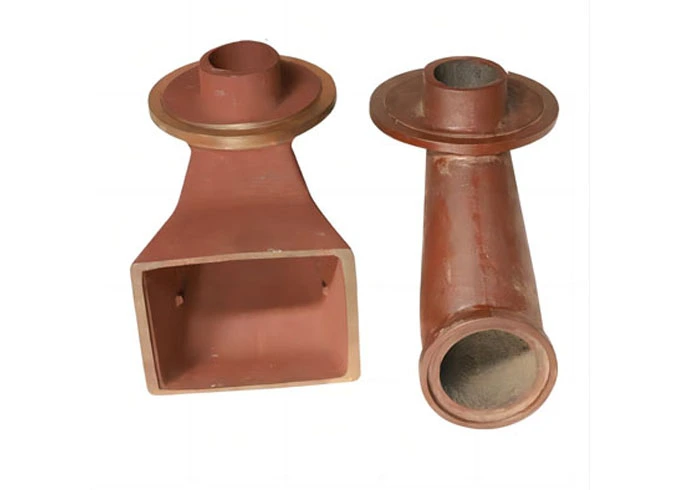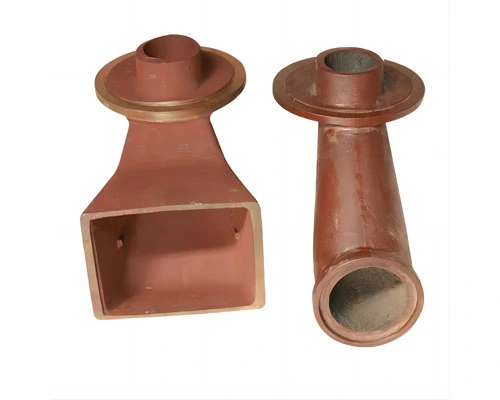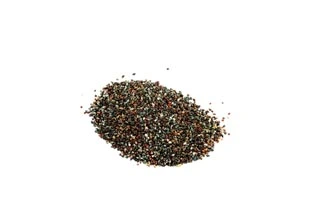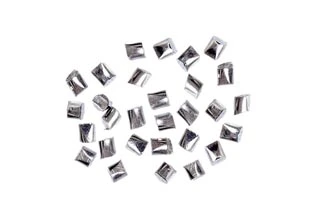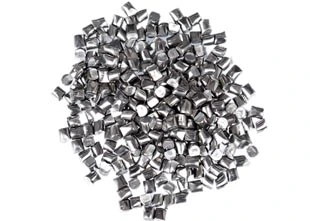Features of Feed Spout
Efficient Handling: The Feed Spout is designed to manage the abrasive flow efficiently, ensuring optimal operation of the blasting system.
Minimizes Wear: Constructed from abrasion-resistant materials, it minimizes wear, extending the lifespan of the component.
Smooth Operation: Its design ensures a smooth and consistent flow of abrasive media, contributing to the smooth operation of the entire system.
For custom shot blasting machine spare parts, contact Rosterblast, your trusted shot blasting machine supplier, for a wide range of selections.
Applications of Feed Spouts in Shot Blasting
In shot blasting processes, the feed spout serves as a critical component in the delivery of abrasive media to the blasting equipment. This specialized feed spout is responsible for several key functions that ensure the effectiveness and consistency of the surface treatment.
Firstly, the feed spout is positioned to receive the abrasive media, which can include steel shot, glass beads, or ceramic particles, from the storage or transport system. The design of the feed spout incorporates mechanisms to precisely control and regulate the flow of the media into the blasting chamber. This includes features such as adjustable openings, vibration devices, or air-assisted systems that allow for precise regulation of the media flow rate and distribution.
Secondly, the feed spout is tasked with providing a steady, even flow of the abrasive media into the blasting chamber. This consistent media delivery is essential for achieving uniform surface treatment across the entire workpiece being blasted. By maintaining a controlled and evenly distributed media flow, the feed spout helps to ensure that the desired media coverage and impact energy are applied uniformly for efficient and effective surface pretreatment.
Moreover, the feed spout design can be optimized to match the specific requirements of the blasting process. This includes adjusting the media flow rate, velocity, and distribution pattern to optimize the media coverage and impact energy for the particular workpiece geometry and surface finishing requirements. The ability to precisely control the media delivery through the feed spout is crucial for achieving consistent, high-quality surface finishes.
In automated shot blasting systems, the feed spout can be further integrated with programmable controls and sensors, enabling precise, computer-controlled regulation of the media delivery. This integration allows for seamless adjustment of the media flow based on process parameters, part handling, and other system operations, contributing to enhanced productivity, efficiency, and quality control.
By carefully managing the delivery of abrasive media through the feed spout, shot blasting equipment can consistently achieve the desired surface finishes while maintaining efficient and reliable operation. The feed spout's design, positioning, and integration with the overall system play a vital role in the success of the shot blasting process.
Applications of Feed Spouts in Surface Finishing
Beyond shot blasting processes, feed spouts also play a crucial role in a wide range of surface treatment applications. These specialized components are designed to precisely deliver the appropriate abrasive media or polishing compounds to the workpiece, ensuring consistent and high-quality surface treatments.
In surface finishing operations, feed spouts are employed to transport a variety of media, including steel shot, glass beads, ceramic particles, and even specialized polishing compounds. The ability to accurately control the flow and distribution of these materials is essential for achieving the desired surface characteristics, whether it's the removal of surface defects, the attainment of a specific level of smoothness, or the creation of a uniform, high-gloss finish.
Feed spouts in surface finishing applications are often designed with adjustable openings, vibration mechanisms, or air-assisted systems to regulate the flow of the media. This precise control allows operators to fine-tune the delivery of the abrasive or polishing agents, ensuring that the correct amount and distribution are applied to the workpiece. By tailoring the feed spout's parameters to the specific finishing requirements, manufacturers can optimize the process and achieve consistent, repeatable results.
In automated surface finishing systems, feed spouts can be seamlessly integrated with computer-controlled mechanisms, enabling real-time adjustments to the media delivery based on factors such as part geometry, surface condition, and process parameters. This level of automation and process control is crucial for maintaining high efficiency, minimizing waste, and ensuring the consistent quality of the final product.
Furthermore, the materials used in the construction of feed spouts for surface finishing applications are selected to withstand the abrasive nature of the media and the harsh operating environments. For surface treatment in construction, this attention to durability and wear resistance helps to extend the lifespan of the feed spout, reduce maintenance requirements, and contribute to the overall reliability of the surface finishing system.
By carefully selecting and integrating the appropriate feed spout technology, surface finishing operations can achieve remarkable results, from the precision polishing of delicate components to the large-scale treatment of complex industrial parts. The versatility and performance of these specialized components are essential for meeting the ever-evolving demands of modern surface finishing processes.
 English
English
